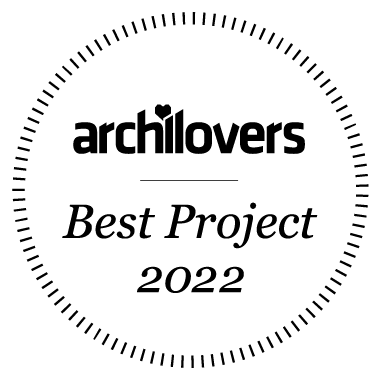La Balma
Housing Cooperative Barcelona / Spain / 2022
La Balma is a project promoted by Sostre Cívic, which was the winner to develop a plot in the Poblenou neighborhood in the first public tender for leasehold of land for cooperative housing. The project seeks to expand the stock of non-speculative and affordable housing in the city.
During the competition phase, a socio-economic diagnosis of the group and a participatory process were made to work on and reach a consensus proposal, in which the user and the community play a leading role; the outcome is a building understood as an infrastructure that accompanies them and allows them to evolve freely from three social spheres: the neighborhood, the community, the unit of conviviality.
Taking into account the available resources, the focus was also on the initial cost of construction and use of the building, thinking about the final economic impact for the user avoiding energy poverty by reducing the cost of comfort by more than 50%.
Relationship with the neighborhood
The building is located at the corner of Espronceda and Camí Antic de València Streets. The latter is a green axis full of facilities in the neighborhood. The cooperative wanted to participate as another facility on this axis, sharing spaces with the neighborhood and expressing the richness of inner community life in its most public facade. That is why it has the main access, all the communal spaces and the vertical circulations on the north façade, opening onto the public space of the Camí Antic de València. At Espronceda Street there is a commercial space, which is now used by an NGO, collaborating to activate the ground floor of the street.
Circulations and community spaces
A program of community spaces arises from the participatory process. These are distributed in height on all floors. Circulations always accompany community spaces. They are open, ventilated and sunny spaces, to enhance human relationships, spontaneous encounters, and cooperative activities throughout the building.
On the ground floor we find the communal kitchen-dining room, space for bicycles and workshop open to the neighborhood, the lobby and two commercial spaces. In the other floors the program is distributed in smaller rooms (multipurpose room, reading space, guest rooms, care space and laundry). Finally, the roof, fully accessible, is understood as the outer space of the cooperative. A terrace of more than 300m2 that will be equipped with productive orchards, space of shade and recreation.
Housing Units
The building has 20 units, one of which will be used as a bridge floor for families in the process of social reintegration. The typologies are flexible and designed from a grid of 16m² open pieces, these pieces allow very diverse divisions and distributions, allowing the user to decide on their spaces. Each unit starts from a fully equipped 50m² base, corresponding to the small typologies (S). This basic unit is extended with one or two pieces, becoming types Medium or Large. The changes are managed by the cooperative to adapt to the needs through time.
Environmental strategy
The main strategy is to reduce the demand on all consumption of the building by offering good climatic comfort despite the different surrounding conditions, and a limited budget. We achieve this goal with the following actions:
• A changing section of the building with open circulation spaces. Maximum solar capture is sought on floors 1, 2 and 3 where the walkway is on the Espronceda façade acting as an acoustic cushion for the street. In floor 4 and 5 the walkway on the interior façade acts as sun protection.
• Compactness of heated areas, making homes over isolated, with minimal energy losses in winter. For the hotter months good cross ventilation and a sun protection facing South.
• Heating and domestic hot water will be generated by a geothermal system that will achieve comfort at the minimum energy cost and environmental impact. This system also allows for free-cooling during the warm months.
• Heating and cooling terminals are radiant clay panels in the walls. The maximum performance is obtained with this system that works at low temperature. In addition, clay works as a highly water-regulating material.
• Centralization of systems to facilitate maintenance, improve efficiency and minimize costs.
• Perfectable facility infrastructure. Leaving forecast for systems that in the future can improve the autonomy of the building. There will be the infrastructure for the installation of photovoltaic panels and the pipes for a greywater recovery system.
Construction
The building has 2 types of structure that optimize the functions of each material, cost, speed of construction and environmental impact. In the ground-floor a reinforced concrete structure is proposed and a laminated wood structure for the upper floors. It is a lightweight building, which reduces the foundation and the materials of mineral origin used in the building, offering comfort, healthy spaces and achieving a better environmental impact.

La Balma is a project promoted by Sostre Cívic, which was the winner to develop a plot in the Poblenou neighborhood in the first public tender for leasehold of land for cooperative housing. The project seeks to expand the stock of non-speculative and affordable housing in the city. During the competition phase, a socio-economic diagnosis of the group and a participatory process were made to work on and reach a consensus proposal, in which the user and the community play a leading...
- Year 2022
- Work finished in 2022
- Client Sostre Civic
- Contractor La Constructiva SCCL
- Cost 2.477.00€
- Status Completed works
- Type multi-purpose civic centres / Apartments / Multi-family residence / Social Housing
- Websitehttp://www.milenavillalba.com








comment